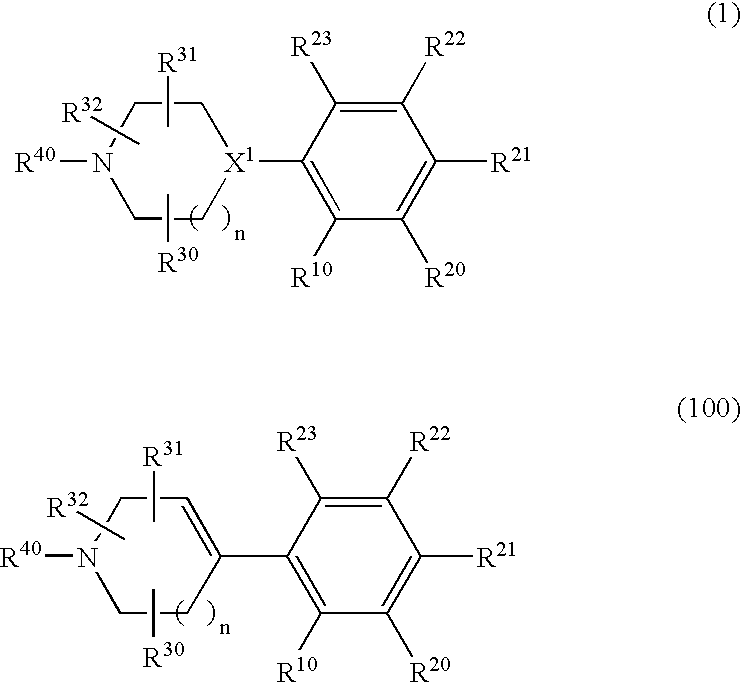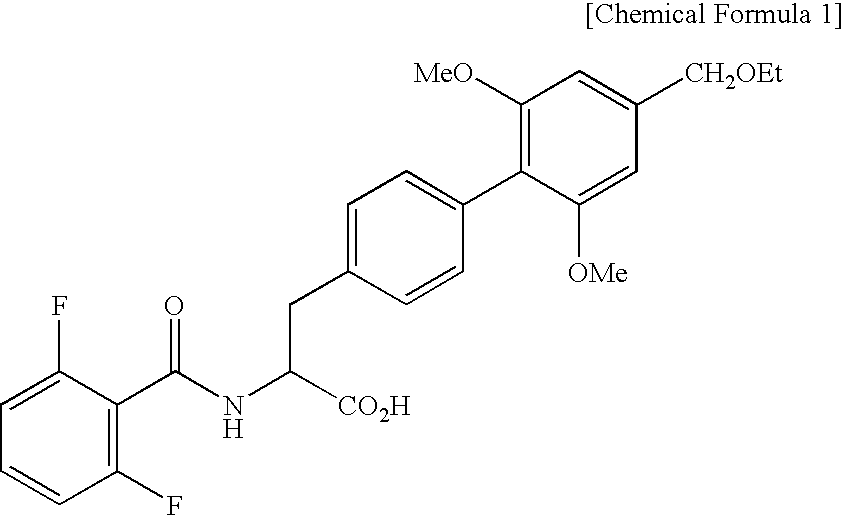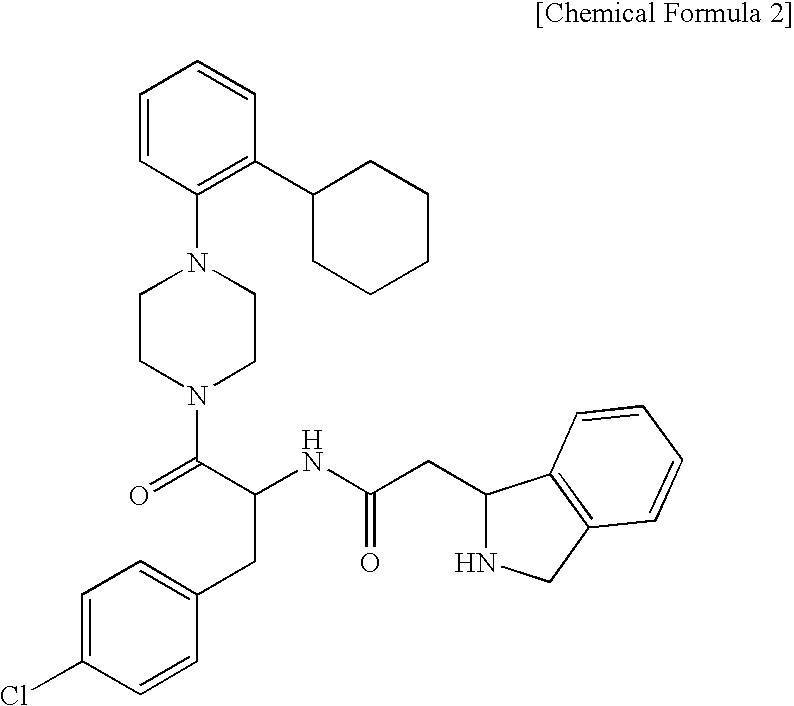1,2-di(cyclic) substituted benzene derivatives
- Summary
- Abstract
- Description
- Claims
- Application Information
AI Technical Summary
Benefits of technology
Problems solved by technology
Method used
Image
Examples
production example 1a
Trifluoromethanesulfonic acid 4,4-dimethylcyclohex-1-enyl ester
[0849]
[0850] A mixture of lithium bis(trimethylsilyl)amide (1M solution in tetrahydrofuran, 172 mL, 172 mmol) and anhydrous tetrahydrofuran (400 mL) was stirred, and then cooled to below −70° C. in a dry ice-acetone bath under a nitrogen atmosphere. A solution of 4,4-dimethylcyclohexanone (18 g, 143 mmol) in anhydrous tetrahydrofuran (100 mL) was added dropwise to the solution over 30 minutes. After stirring for 2 hours and 10 minutes under the same conditions, N-phenyl bis(trifluoromethanesulfonimide) (54 g, 150 mmol) was added to the reaction mixture, and stirring was continued for 16 hours while slowly warmed to room temperature.
[0851] Saturated aqueous ammonium chloride was added to the reaction mixture to quench the reaction. Hexane and water were added to the mixture, and the organic layer and aqueous layer were separated. The organic layer was washed with brine and then dried over anhydrous magnesium sulfate. Th...
production example 1b
1-(4,4-Dimethylcyclohex-1-enyl)-2-nitrobenzene
[0854]
[0855] To a solution of 2-nitrophenylboronic acid (14.2 g, 85.19 mmol) in toluene (250 mL)-ethanol(125 mL) were added trifluoromethanesulfonic acid 4,4-dimethylcyclohex-1-enyl ester (20 g, 77.44 mmol) prepared in Example (1a), tetrakis(triphenylphosphine)palladium(0) (4.5 g, 3.87 mmol) and 2N aqueous sodium carbonate (128 mL, 256 mmol). The mixture was stirred at an external temperature of 100° C. for 1 hour and 45 minutes under a nitrogen atmosphere.
[0856] After air-cooling the reaction mixture to room temperature, it was passed through Celite and insoluble matters were filtered off. Ethyl acetate and water were added to the resultant filtrate and the filtrate was extracted with ethyl acetate. The collected organic layer was washed with water and brine in that order and then dried over anhydrous magnesium sulfate. The desiccant was filtered off, and the filtrate was concentrated under reduced pressure. The resultant residue was ...
production example 1c
2-(4,4-Dimethylcyclohexyl)phenylamine
[0859]
[0860] A mixture of 1-(4,4-dimethylcyclohex-1-enyl)-2-nitrobenzene (16.3 g, 70.5 mmol), 10% palladium on carbon (1 g, wet) and ethyl acetate (100 mL) was stirred for 14 hours and 30 minutes under a hydrogen atmosphere at atmospheric pressure and room temperature.
[0861] The reaction mixture was filtered and the filtrate was concentrated under reduced pressure. A mixture of the resultant residue, 10% palladium on carbon (3 g, wet) and ethyl alcohol (200 mL) was stirred for 30 hours and 30 minutes under a hydrogen atmosphere at atmospheric pressure and room temperature.
[0862] After the reaction completed, the reaction mixture was filtered and the filtrate was concentrated under reduced pressure. The resultant residue was purified by silica gel column chromatography (ethyl acetate / hexane) to give 11.79 g of the title compound as a light yellow solid.
[0863]1H-NMR (400 MHz, CDCl3)
[0864]δ: 0.97 (s, 3H), 0.99 (s, 3H), 1.36 (td, J=13.2, 4.0 Hz,...
PUM
| Property | Measurement | Unit |
|---|---|---|
| Molar density | aaaaa | aaaaa |
| Molar density | aaaaa | aaaaa |
| Molar density | aaaaa | aaaaa |
Abstract
Description
Claims
Application Information
 Login to View More
Login to View More - R&D
- Intellectual Property
- Life Sciences
- Materials
- Tech Scout
- Unparalleled Data Quality
- Higher Quality Content
- 60% Fewer Hallucinations
Browse by: Latest US Patents, China's latest patents, Technical Efficacy Thesaurus, Application Domain, Technology Topic, Popular Technical Reports.
© 2025 PatSnap. All rights reserved.Legal|Privacy policy|Modern Slavery Act Transparency Statement|Sitemap|About US| Contact US: help@patsnap.com



